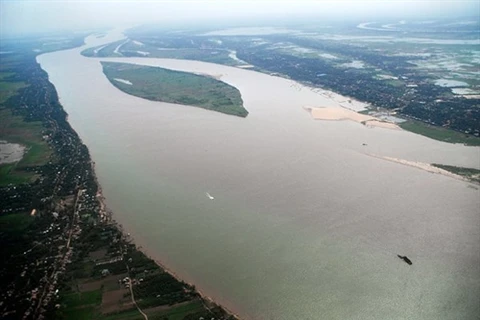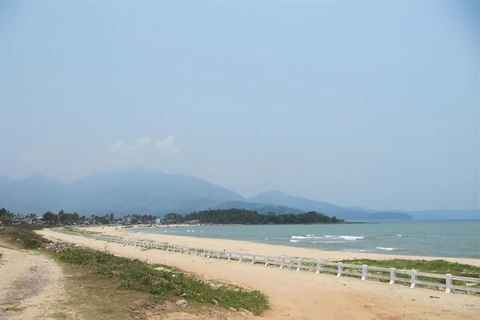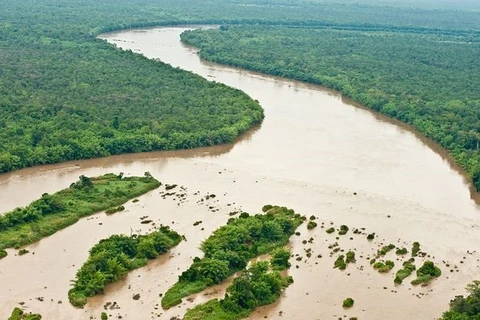Hau Giang (VNA) – Nearly 9,000 households with tens of thousands of people in the Mekong Delta province of Hau Giang are being affected by riverbank erosion and need to be relocated early to ensure their safety.
Among them, more than 1,000 households reside in areas with high risk of erosion, Nguyen Trong Uyen, head of the southern branch of the National Institute of Agricultural Planning and Projection, said at a recent meeting.
Erosion occurs mainly along the Cai Con, Cai Dau, Mai Dam, Nga Sau and Xa No rivers. It is triggered by the movement of high-speed boats and uncontrolled sand exploitation on rivers which changes the flowing direction of rivers and canals.
Mushrooming construction along riverbank and climate change impacts, including sea level rise, have also deteriorated erosion, he noted.
Nguyen Van Phien, Vice Chairman of the Chau Thanh district People’s Committee, said erosion on local rivers and canals is growing more frequent and serious. Hundreds of influenced families now need to be resettled in better places. However, his district has no residential land areas that are big enough to settle them.
The national institute branch said Hau Giang should build concentrated residential areas to relocate households in high-risk areas, or settle them in existing communities which are in safer places. Meanwhile, authorities should assist families in low-risk areas to settle down right in these areas.
The branch estimated that nearly 600 billion VND (26.37 million USD) will be needed to relocate people in erosion-prone areas from now to 2030, mainly to build concentrated residential areas, upgrade infrastructure in existing communities to receive affected families, and provide direct assistance to displaced people./.
VNA

























